Upon reading an article put out by the National Center for Learning Disabilities (NCLD) about graduation tests and standards and how it impacts those with learning differences, it got me thinking about my children who learn differently. Of my seven children, I may have been able to press two of them to fit the mold of school. Yet, at what expense? In my strengths-based learning environment I created for my children through homeschooling, I found that there were four “given” factors or ingredients that seemed common to all my children that would preclude them from fitting into a school mold, yet are the very factors that helped them be successful and joyful learners.
Close-ended standardized learning: What you learn is carefully portioned out and systematically spoon fed.
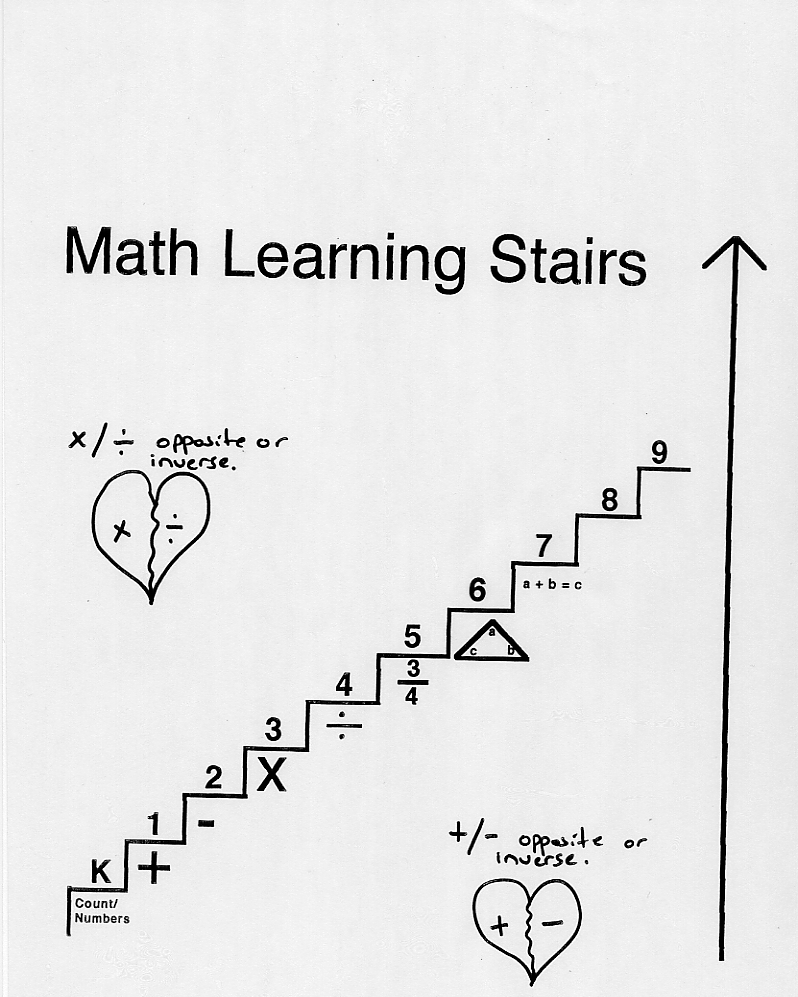 Geography might be portioned by near to far, i.e., starting with our community and extending out to the city, state, country, continent. History may be portioned by chronological order and/or by region. Math starts with addition and goes up to higher math such as algebra or calculus. An equal portion of each subject will be studied each year. That’s referred to as synchronous learning.
Geography might be portioned by near to far, i.e., starting with our community and extending out to the city, state, country, continent. History may be portioned by chronological order and/or by region. Math starts with addition and goes up to higher math such as algebra or calculus. An equal portion of each subject will be studied each year. That’s referred to as synchronous learning.
Open-ended individualized learning: A learner naturally gravitates to his strengths in the young, formative years, and expands out from there.
I noticed in hindsight and translation that each of my children navigated through what I view as natural or organic developmental learning stages. To help them benefit the most from each stage, I was an important facilitator and collaborator. Strengths-based learning occurred first, after which a sampling of a variety of subjects and interests transpired, and ended with filling any gaps or general learning and working on weaknesses. This organic process to learning seems to naturally appear asynchronous.
My question then becomes, what is natural? Evenly distributed learning all at the same time? Or do we all tend to learn in fits and starts, but ultimately, it all comes together that we are an educated person? There’s a saying in the religious world that there will come a time when “good is said to be evil, and evil to be good.” Has school promoted a similar thinking: Natural asynchronous learning is said to be disabled, and synchronous, cookie-cutter molded learning is said to be normal?
Close-ended standardized learning: What you learn is capped.
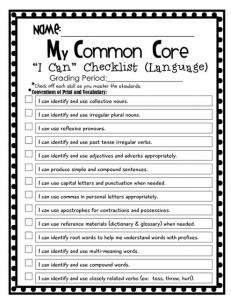 Each grade level has a measured goal to reach for each subject. i.e., First graders will all learn “x” in math by the end of first grade. Teachers create lesson plans for the day and week, and that’s what will be learned for that day. No time for other things. Even individualized education plans (IEPs) have measured goals to be reached by the end of the year. When it’s reached, the box is checked and the next goal in line is to be learned.
Each grade level has a measured goal to reach for each subject. i.e., First graders will all learn “x” in math by the end of first grade. Teachers create lesson plans for the day and week, and that’s what will be learned for that day. No time for other things. Even individualized education plans (IEPs) have measured goals to be reached by the end of the year. When it’s reached, the box is checked and the next goal in line is to be learned.
Open-ended individualized learning: Learn as much about a topic as you like!
In our homeschooling environment, learning was interest-based. There is no cap on any subject for any age. If my child wants to learn about penguins at 7 years old, he can take it all the way to adult level understanding. That was one of my artist son’s interests about that age. He had been inspired by a movie. His drive prompted him to learn all the different types of penguins, where they live, what characteristics differentiated them from another, and how these creatures lived day to day. I found out a geologist (Ph.D. level) friend had been to Antarctica and had filmed penguins there. My son was excited to watch and was able to identify all of them better than the doctorate-level professional.
My question then becomes, isn’t this the heart of figuring out one’s passion in life? If you have to sit at a table, and your parent then gives you a spoonful of everything on the table, carefully measured out, no more and no less, does that make a person turn off their own preferences and submit to what they can’t control? Even if something that you are served tastes good, you’re not allowed seconds, or a whole plate of it. But, if you have a smorgasbord in front of you and you get to sample and taste what you see and discover what you love and then take it and see what else you can do with it, doesn’t that ignite passion?
Close-ended standardized learning: Time for learning is capped.
Spelling time will be for 15 minutes from 1:00-1:15 p.m. each day. Writing time is for 30 minutes from 10:00-10:30 a.m. each day. If you’re in the middle of a story and the time is up, you need to put it away until tomorrow. The schedule dictates how much time will be devoted to each subject, whether a child has learned it or not, or satiated his enthusiasm for the assignment or not. I tell this story in my book, The Right Side of Normal:
Our class was studying planets in the second grade. Each child presented an oral report on a planet of his or her choice. I chose Venus. It seemed mysteriously accessible. I was fascinated by the whole idea of other planets out there. I wanted to know more! When I presented my report to the class, it simply whetted my appetite for more, so I did something I’d never done before as a shy child. I approached my teacher and asked her if I could do more to learn about the planets. I still remember her shocked expression, her hesitation as she contemplated how to answer a question I could tell she had never been asked before. Haltingly she replied, “I guess you can do another oral report on another planet if you’d like.” I don’t know what I expected, but I know it wasn’t that. I wanted something more real, more concrete, and more hands-on. I tried to create another oral report, but my enthusiasm deflated quickly.
Open-ended individualized learning: Take as long as you want to learn something!
My children could continue a project as long as they wanted. In fact, we had to negotiate project space because so many right-brained people like to have 3 to 4 projects going at once, all where each can be seen. That’s because they are creativity-infused learners…whatever strikes their creative flow that day upon visually seeing the various projects gets worked on. Because they are process people versus product people, projects don’t always get finished. That’s why in the adult world, one strategy right-brained people can do is hire finishers. They can create and be innovative and then direct the completion by someone else if they choose not to complete it themselves before they are unto a newer, more exciting discovery. On the other hand, my creative children could immerse themselves in learning a particular subject for weeks and months at a time if the process isn’t satiated. It’s not about reaching an end product for them, but making sure all that can be discovered and understood from the process was enough.
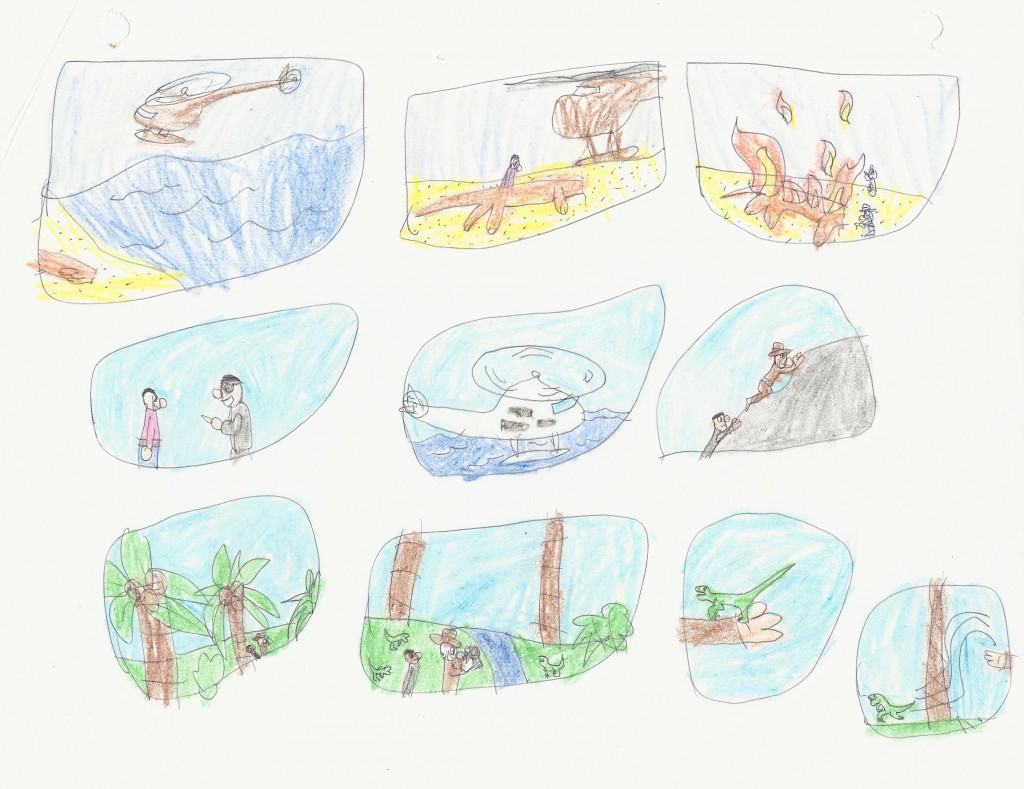
My artist son hired out his writer sister to color his drawings in exchange for him drawing her pictures.
My question then becomes isn’t this at the heart of creativity, innovation, and a love of learning? I never understood or appreciated, frankly, the little craft projects sent home by children from school. Why? Because I know more often than not, each of the pieces were pre-cut, and instructions were given or a model on how it would be put together was displayed, gluing certain things here or there, and coloring this or that. And they all looked alike. And if time was running out or a child was struggling with a part of the instruction, a “helpful” adult hurried the project to completion. I saw this as the school’s “show me work,” proof they had done something that day. Certainly it wasn’t reflective of my child’s imagination or creation! Why do we bother?
Close-ended standardized learning: It’s weakness-centered.
School scopes and sequences have their checklist. If you’re good at something, like math, and the first grade checklist for math comes easily to you, then you get to do more of the same, go off and do some other busy work while others figure it out, or just be bored. You certainly don’t get to delve deeper into math learning! But if something is on the checklist that you’re not ready to learn yet, or aren’t that naturally good at, or you’re just not that interested in it, then you have to put more work into that, more time devoted to remediating your struggle, and extra practice to bring you to proficiency for that test. In other words, it’s a weakness-centered learning environment.
Open-ended individualized learning: It’s strengths-based.
My children were able to pursue what they were gifted at…to figure that out in their young years. What did they naturally gravitate to? Ancient Egypt? Really? Okay, let’s bring in more of that. Trips to the museum to see a mummy display? Time Traveler books? Does he build with LEGO? Okay, what else would interest you? Math manipulatives like pentominoes? Fischer Technic? A strength’s based learning environment presses to see how far the learning interest goes and how much it can expand. It teaches learners to know what enthusiasm feels like, what curiosity feels like, what creative flow feels like.
My question then becomes isn’t this the foundation for creating a life of purpose? When a strengths-based learning environment is the foundation, then when the stage of sampling other subjects comes along, their curiosity propels them. When the stage of filling in gaps or looking at weaknesses enters, it’s balanced against a foundation of strengths that lifts and prioritizes the less interesting or capable oriented subjects. What kind of writing does a computer programmer need to be successful? What kind of foreign language would best suit an artist? It now has context and purpose.
These four attributes of what constitutes effective open-ended individualized learning creates asynchronous learning patterns because that’s how strengths-based learning develops passion and purpose. My artist son excelled in history, geography and language skills young, but later took in math and science in a balanced manner. My writer daughter excelled in reading, writing, and nature studies young, but later took in history and geography. My builder son excelled in math, science, and engineering young, but later took in writing and reading. By high school, everything balanced out. Yet, they each had a foundation of knowing their strengths and gifts and knowing how to navigate any other subject as it interrelated to that gift. By individualized assessment, each had a unique transcript and each pursued the next step of learning related to that goal.
Close-ended standardized learning creates clones conditioned not to think. We’re human beings capable of extraordinary things through the development of our gifts and strengths. The four open-ended individualized learning attributes facilitates individual passion and purpose that will be developed to bless our world. We need to press our schools to adopt practices that develop these better learning attributes. In our homeschools, we can provide this better model for learning!


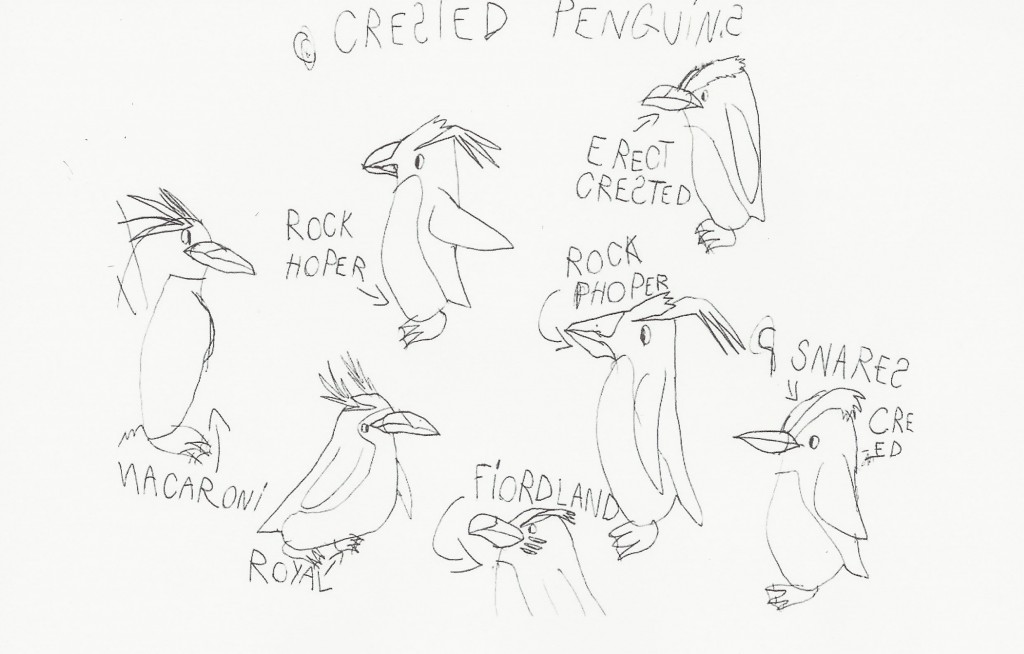
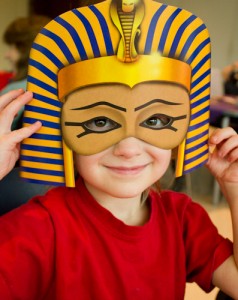
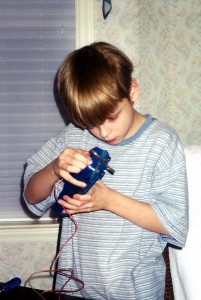





Pingback: It’s All Connected, IV « Joyful Latin Learning — Tres Columnae
Pingback: Your Child Might Be Right-Brained If … | The Right Side of Normal
Pingback: A Different Process and Product |